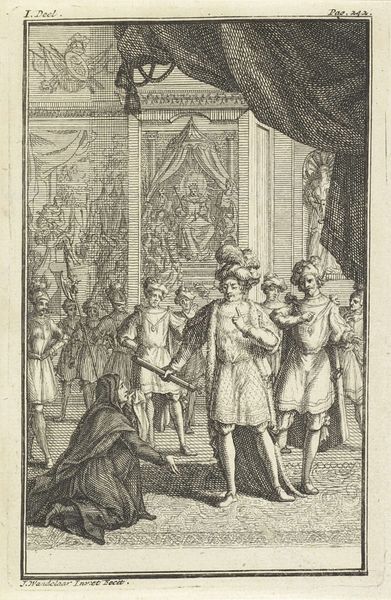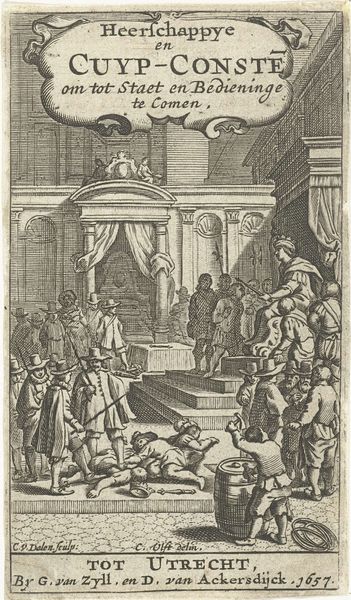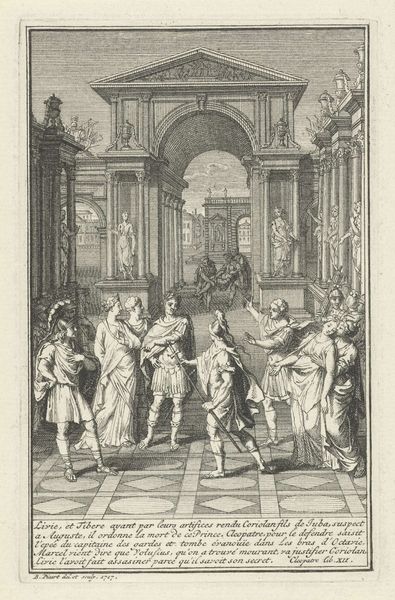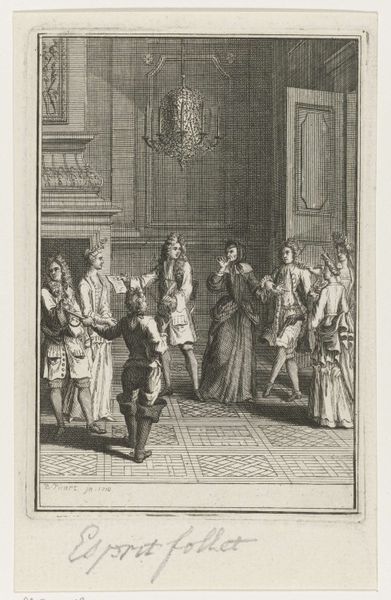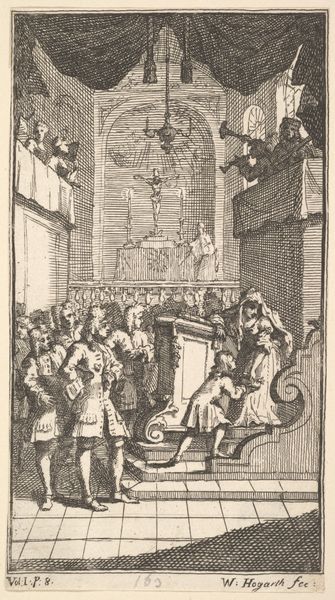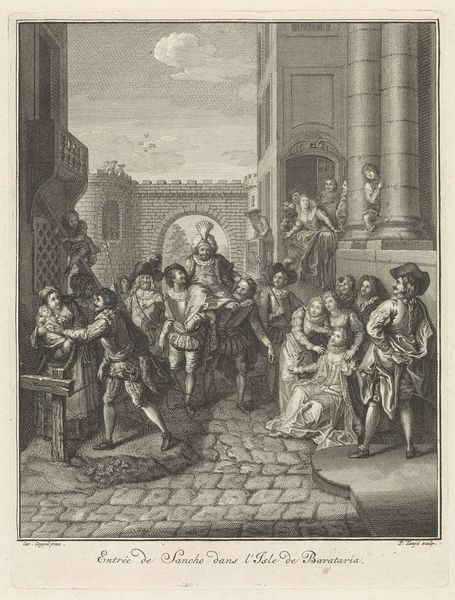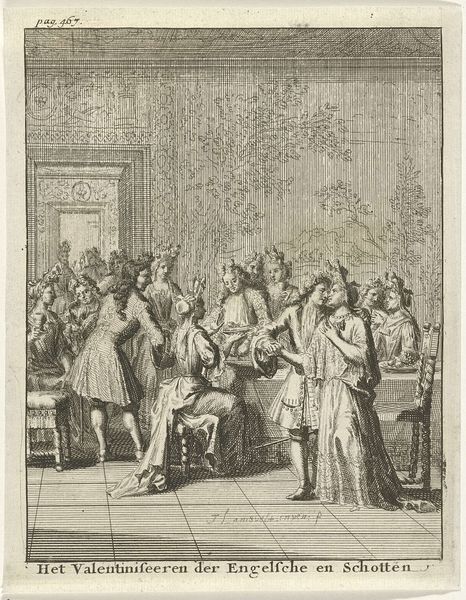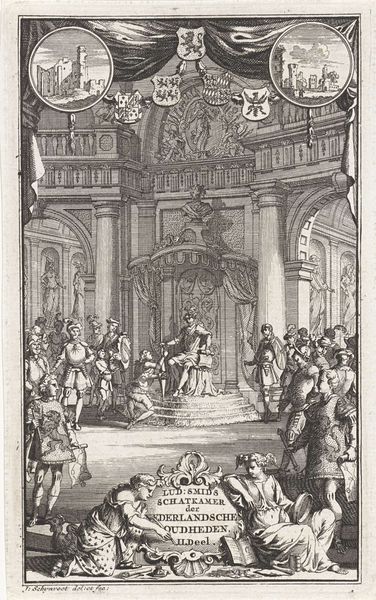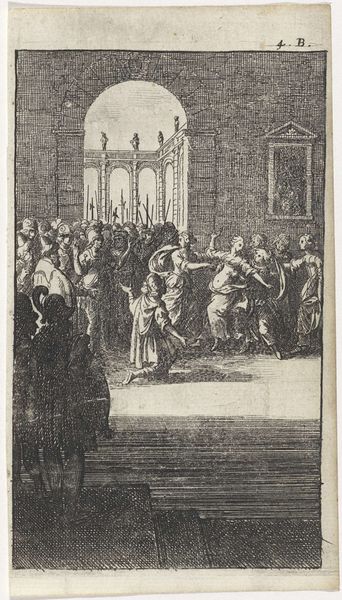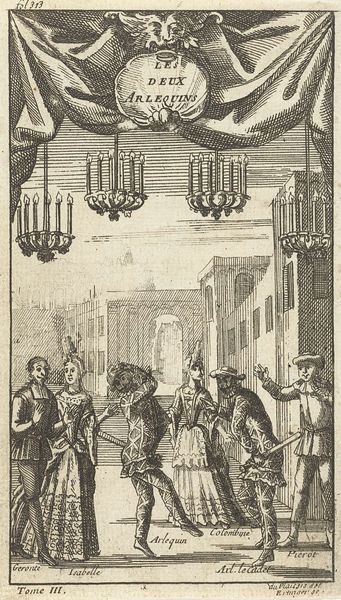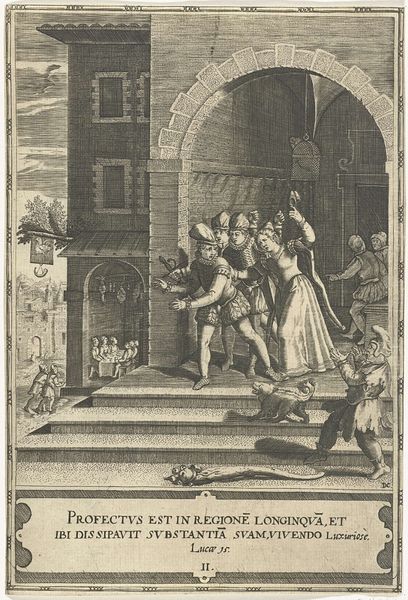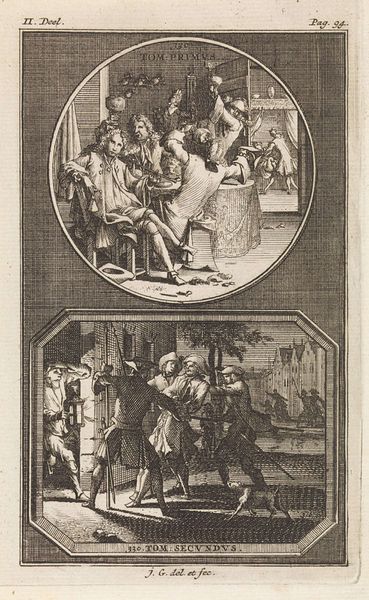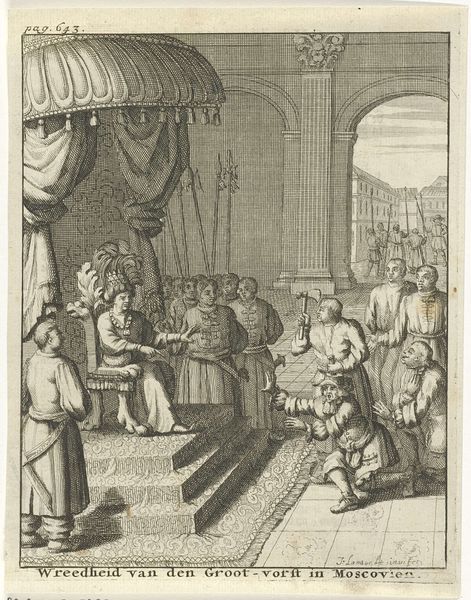
Kerkinterieur met heerser bij altaar en leger soldaten 1692 - 1714
0:00
0:00
thomasdoesburgh
Rijksmuseum
engraving
#
portrait
#
baroque
#
old engraving style
#
caricature
#
genre-painting
#
history-painting
#
academic-art
#
engraving
Dimensions: height 162 mm, width 141 mm
Copyright: Rijks Museum: Open Domain
Curator: This engraving by Thomas Doesburgh, made sometime between 1692 and 1714, is titled "Kerkinterieur met heerser bij altaar en leger soldaten," or "Church Interior with Ruler at the Altar and Army of Soldiers." The scene feels incredibly staged, almost like a theatrical production. What's your initial response to the imagery here? Editor: There's definitely a palpable sense of solemnity and authority, but it also feels stiff, even slightly oppressive. The stark contrast between the light and shadow intensifies the scene. I'm drawn to the mass of spears in the background—they create a powerful, if somewhat intimidating, visual echo. It brings to mind questions of power structures. Curator: Indeed. Consider the broader context—this piece reflects the era's fascination with meticulously depicting power and religious ceremony. It’s academic art, yes, but let’s not shy from what that meant politically: images of the powerful reinforced certain accepted narratives and often bolstered those who were ruling, even in religious contexts. Editor: I agree, but on another level I see a complex weave of symbols here. The church interior is not merely a space; it signifies divine sanction, authority, tradition. The ruler near the altar underscores a connection between earthly power and heavenly grace. The weapons, of course, point to domination. The symbols build layers of cultural memory associated with rulers through time. Curator: It’s fascinating to think of the image's initial intended audience. It appears as an “old engraving style” almost like a caricature, but it was produced for consumption and perhaps to create discourse on the social politics during this time. The intersection of religious setting and military power reflects ongoing conflicts about the nature of rulership at that point in time. Editor: Exactly. And that visual layering— the church, the soldiers, the kneeling supplicant—reflects power relations that span centuries. It seems this piece captured the complex nature of its specific time period, as well as the overarching historical connections between the church and the state through iconic visual markers. Curator: Looking closely reveals layers of political and social messaging aimed to affirm particular roles. Considering how Doesburgh blended political and religious imagery opens intriguing avenues into our ongoing reflection of cultural authority. Editor: Absolutely. Examining those symbolic layers allows the past to inform our perceptions, sparking fresh conversations about the way social structures form cultural symbolism.
Comments
No comments
Be the first to comment and join the conversation on the ultimate creative platform.
